Cavities on front teeth facts
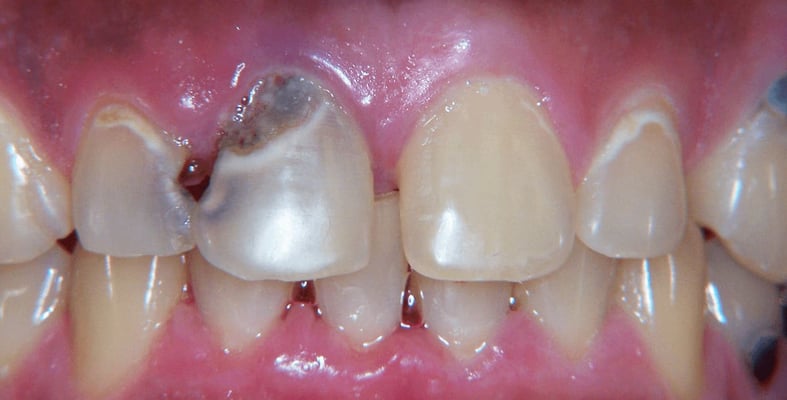
Cavity on front tooth: What is it?
Cavities on the front teeth are usually due to a combination of inadequate brushing and flossing, and a diet full of sugary, acidic food and drink, the same reasons and in the same way as cavities in any other part of the mouth
How cavity on front tooth forms?
Cavities on front teeth form when acids and sugars combine with bacteria in the mouth.
They build up on teeth to form a sticky substance called plaque. If the plaque stays there long enough, it will start to eat away at the hard, outer layer of the tooth called the enamel.
The resulting hole is called a cavity.
-
Start of cavity on front tooth
Further to how the cavity forms, if you pay close attention to tooth color, you can see decay starting with white spots and leading to light brown or gray tooth color.
What does a cavity look like on a front tooth?
Visible Discoloration or Dark Spots
At first, these spots may look like simple staining and you may even assume that you just have mild tooth discoloration.
However, over time, the dark spot gets larger, signaling tooth decay.
In some cases, cavities can even look like white spots or light marks on the tooth.
Types of cavities on front teeth
While your front teeth are smoother and easier to clean, they're not immune to cavities. Any of your or your child's teeth can develop decay without mindful oral hygiene.
-
Cavity on front side of tooth
Cavities that are placed on the front of a tooth are a little rarer than regular cavities, but they are a real threat.
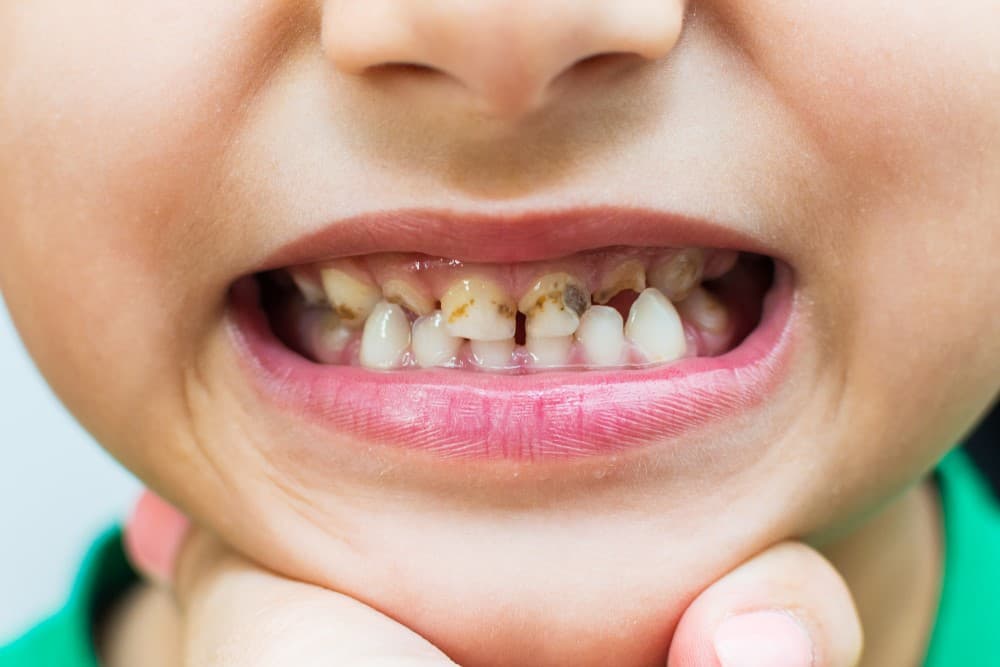
-
Cavity on back of front tooth
The back surface of the front teeth is less susceptible to caries just like the front side due to the smoothness of the surface.
Keeping in mind the front teeth are easier to access for cleaning, but they’re not immune to cavities.
-
Cavity on side of front tooth
If the cavity is caught early and only extends halfway or less into the enamel, it can typically be recalcified with fluoride gel.
If the cavity extends more than halfway into the enamel, a filling can be used to restore the tooth to its normal shape and function.
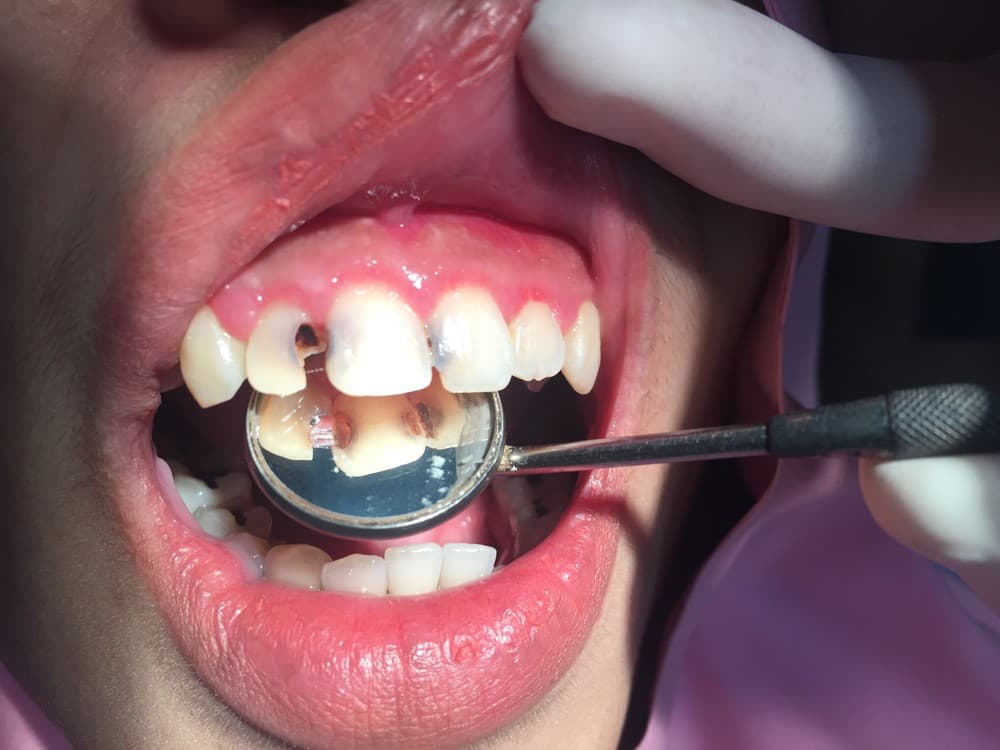
-
Early tooth cavity front teeth
As we mentioned in our last segment the earlier the detection of the caries the easier the treatment with less expense and better results,
Early stages the teeth develop white chalky areas.
In later stages, teeth have brown or black areas.
What causes cavities in front teeth?
The reason and factors for cavities in front teeth are the same for back teeth, following we share most common factors for cavities in front teeth:
-
Crooked teeth
It’s more difficult to keep your teeth clean, flossing is hard enough, but with crooked teeth, it’s even more challenging to get it between those tight spaces. The same thing applies to your toothbrush, which means you could have a tough time trying to maintain your oral hygiene.
-
Dry mouth
If you don't have enough saliva and develop a dry mouth, this can lead to increased plaque, tooth decay, and gum disease, Mouth sores, Yeast infection in your mouth (thrush).
-
Inadequate brushing and flossing
Normally the body's natural defenses and good oral health care, such as daily brushing and flossing, keep bacteria under control.
However, without proper oral hygiene, bacteria can reach levels that might lead to oral infections, such as tooth decay and gum disease.
-
Full of sugar diet
In addition to bad impact on oral hygiene, sugar diet effects include, higher blood pressure, inflammation, weight gain, diabetes, and fatty liver disease — which are all linked to an increased risk for heart attack and stroke.

-
Acidic food and drink
Foods and beverages that are high in acids wear away the enamel that protects your teeth, a process known as tooth erosion. This changes the appearance of your teeth and opens the door for bacteria that can cause cavities or infection.
-
Certain medications
Saliva protects and helps repair our teeth from the constant assaults that bacteria and our diet together mount against our tooth enamel. But more than 600 medications cause dry mouth, reducing saliva flow or even turning off the spigot and leaving millions of people at increased risk for tooth decay.

-
Heredity
While most cavities are due to poor oral healthcare practices (such as tobacco use, an unhealthy diet high in sugar, and poor dental hygiene), research suggests that some people may have a genetic predisposition to cavities.
How to treat cavities on front teeth?
Much like cavities elsewhere in the mouth, cavities in the front teeth may be treated with fillings.
A dentist will remove the decayed portion of the tooth and fill it with a strong, restorative material. For a natural look, tooth-colored fillings may be used.
-
Front tooth cavity filling
The treatment for front teeth cavities is the same as for any other cavity.
But because of its location, the dentist will usually recommend better aesthetic options like composite resin.
-
Front tooth implant
Dental implants are often a great choice for replacing missing front teeth. Compared to a dental bridge that requires the adjacent teeth to be prepared for dental crowns, implants don't affect your other teeth at all.
-
Laser dentistry to fix front chipped tooth
If you have chipped off just a small piece of tooth enamel, your dentist may repair the damage with a filling.
If the repair is to a front tooth or can be seen when you smile, your dentist will likely use a procedure called bonding, which uses a tooth-colored composite resin.
Cost of front teeth treatment in Turkey
In the following segment we share the costs for dental treatments of front teeth:
-
Front tooth filling cost in Turkey
While using the best quality materials, by top dentists in Turkey we still offer reasonable costs as a tooth filling cost starts from 100 US Dollars.
-
Front tooth implant cost in Turkey
We offer a wide varietu of dental implants to fulfill our patients satisfaction, the costs of tooth implant in Turkey starts from 260 Euro.
-
Laser dentistry in Turkey
The use of lasers in dentistry offers patients the chance to enjoy treatment without pain, bleeding, and anesthesia.
Lasers can also help clean decayed tissue in the teeth, treat gingival infections, conduct cyst operations, and offer any other kind of oral treatment.
Front tooth cavity before and after
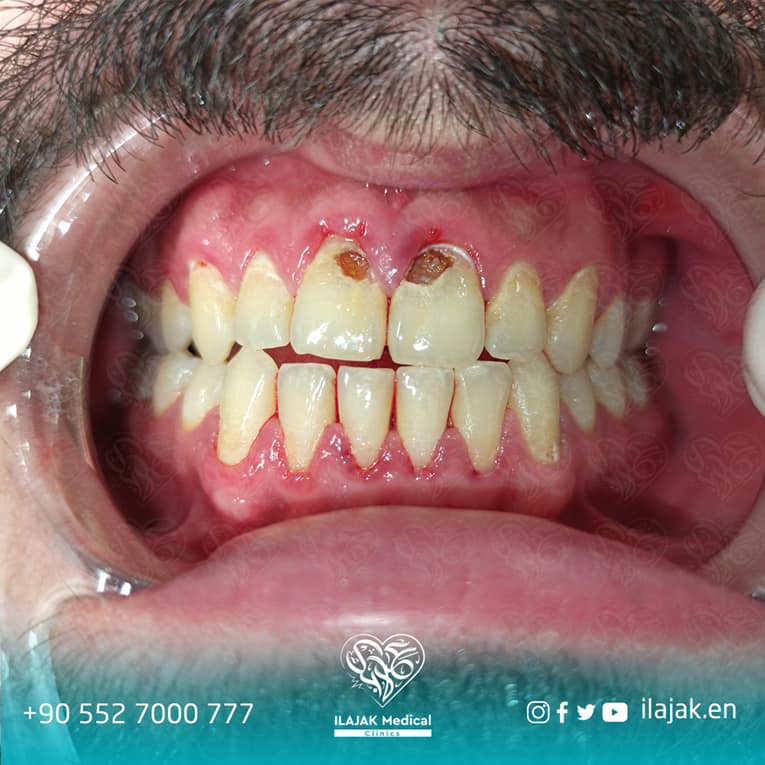
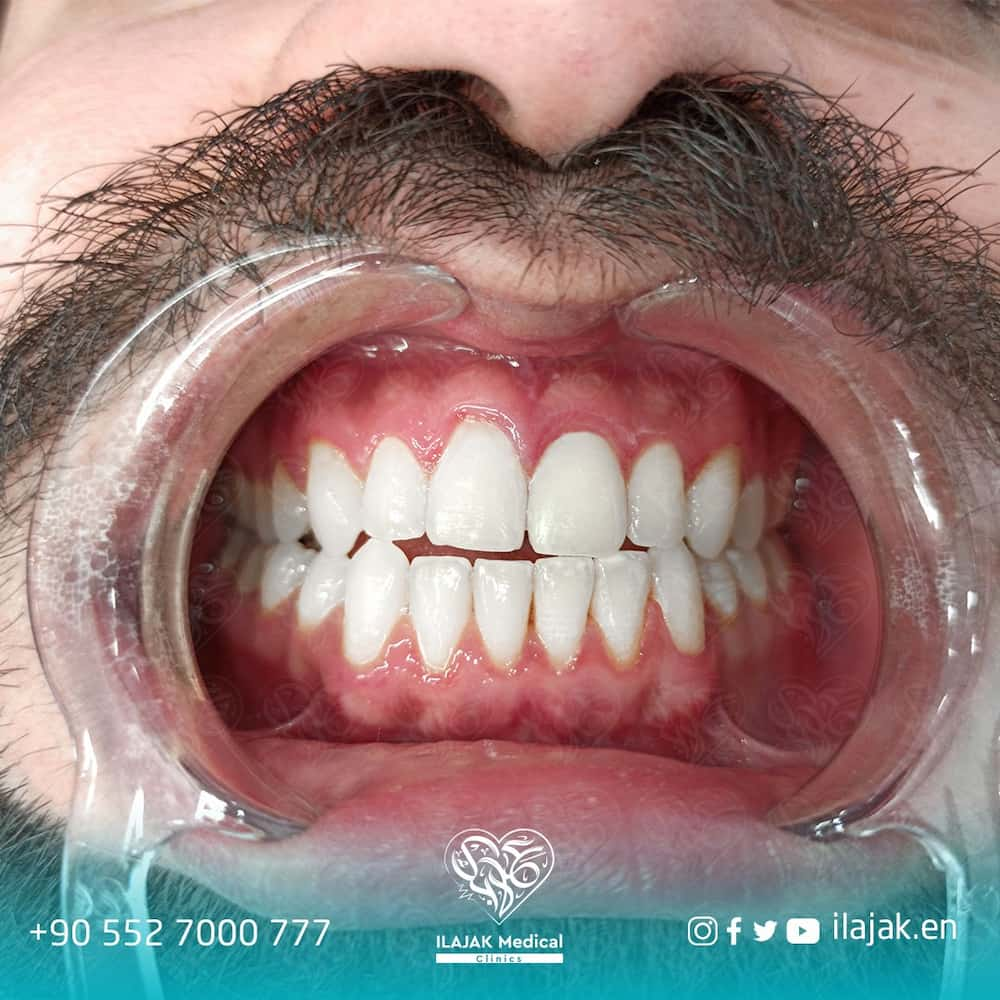




Treatment Services
In the Best Medical Centers
Contact Us
Please fill the form below and describe your condition, We will contact you back
- Dental Treatment
- Hair Transplant
- Obesity Surgery
- Vision Correction
- Health Resorts
- Other Medical Services
- No elements found. Consider changing the search query.
- List is empty.
Your personal data is processed as indicated in the general statement text and by continuing, you explicitly consent to the processing

